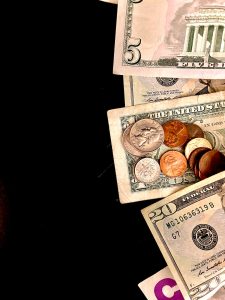Forex trading is a complex and ever-changing industry that requires a lot of knowledge, experience, and skill to be successful. One of the most important aspects of forex trading is understanding the cost of trading. The cost of trading can have a significant impact on your profitability, so it is essential to have a clear understanding of how these costs work. In this article, we will discuss the different costs associated with forex trading and how to calculate them.
Spread
The spread is the most common cost associated with forex trading. It is the difference between the bid and ask price of a currency pair. The bid price is the price at which you can sell the currency, while the ask price is the price at which you can buy the currency. The spread is the commission that the broker charges for executing your trade.
The spread can vary depending on the broker and the currency pair. Some brokers offer fixed spreads, while others offer variable spreads. Fixed spreads remain the same regardless of market conditions, while variable spreads can change depending on market volatility. Generally, major currency pairs have lower spreads than minor or exotic currency pairs.
Calculating the spread cost is straightforward. You simply multiply the spread by the size of your trade. For example, if the spread for EUR/USD is 1 pip, and you are trading 100,000 units, the spread cost would be $10 (1 pip x 100,000 units).
Commission
Some brokers charge a commission on top of the spread. The commission is usually a percentage of the trade value or a fixed amount per lot. The commission cost can vary depending on the broker and the type of account you have.
Calculating the commission cost is also straightforward. You simply multiply the commission rate by the size of your trade. For example, if the commission rate is $5 per lot, and you are trading 10 lots, the commission cost would be $50 ($5 x 10 lots).
Swap
A swap is an interest rate differential between the two currencies in a currency pair. When you hold a position overnight, you either earn or pay interest on the position depending on the interest rate differential. The swap rate can be positive or negative depending on the currency pair and the direction of your trade.
Calculating the swap cost can be a bit more complicated as it involves the interest rate differential, the size of your trade, and the number of days you hold the position. Fortunately, most brokers provide a swap calculator on their website, which you can use to calculate the swap cost for your trade.
Slippage
Slippage is the difference between the expected price of a trade and the actual price at which the trade is executed. Slippage can occur during periods of high volatility or low liquidity when the market moves quickly, and the broker cannot execute the trade at the expected price.
Calculating the slippage cost is not possible as it can vary depending on market conditions and the broker’s execution speed. However, you can minimize the slippage cost by using limit orders instead of market orders and avoiding trading during periods of high volatility or low liquidity.
Conclusion
Understanding the cost of forex trading is crucial for any trader who wants to be successful in the forex market. By knowing the different costs associated with forex trading and how to calculate them, you can make informed trading decisions and manage your risk effectively. Remember that the cost of trading is not the only factor that should influence your trading decisions. You should also consider other factors such as market analysis, trading strategy, and risk management.





